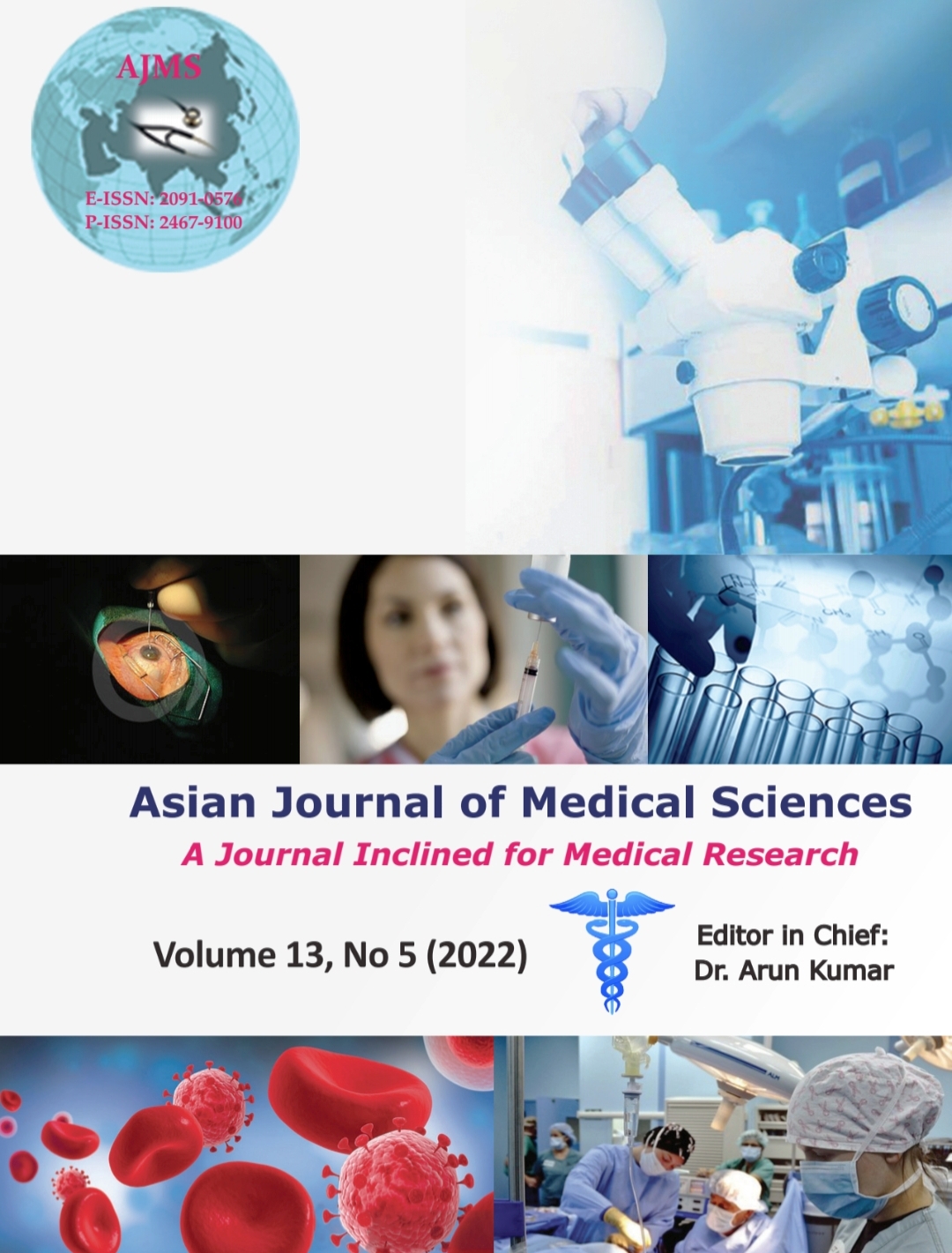A study on clinico-radiological profile, risk factors, and management of mucormycosis during COVID pandemic in Rewa, (M.P.)
Keywords:
Mucormycosis, Diabetes mellitus, Corticosteroids, Covid-19Abstract
Background: Second wave of coronavirus disease 2019 (Covid-19) pandemic has been particularly devastating in India. COVID-19 and mucormycosis (also known as black fungus) are causing comorbid conditions to worsen the extent of infection and mortality rates especially in India. Mucormycosis can involve nose, sinuses, orbit, central nervous system, lung (pulmonary), gastrointestinal tract any many other organs, but rhino orbital cerebral mucormycosis is the most common variety seen. Rapidity of dissemination of mucormycosis is an extraordinary phenomenon and a delay in the diagnosis could be fatal.
Aims and Objectives: The objective of this study is to document the clinical features, radiological extent, risk factors, management,
and outcome of mucormycosis.
Materials and Methods: The study was retrospective observational study. Eighty-two mucormycosis patients admitted in SGMH Rewa were selected as study subjects. Data regarding clinical features, radiological extent, associated risk factors, comorbidities, management during hospital stay, and outcome of mucormycosis patients were collected on excel sheet and analyzed using appropriate statistical tests.
Results: In our study, majority of the patients were unvaccinated (88%). Most common presenting complaint was nasal congestion with or without discharge in 78% patients followed by Facial swelling, visual disturbances, facial weakness, dental pain, etc. On CT or magnetic resonance imaging examination, all cases of mucormycosis had maxillary sinus (100%) involvement, followed by ethmoid (82%) and sphenoid (78%) sinuses. Diabetes mellitus was most common comorbidity seen in 52% cases. About 83% cases had history of receiving high dose steroid intravenously during management of COVID illness. Among study cases 72% patients have taken oxygen supplementation for more than 72 h, for COVID-19 pneumonia before hospitalization for mucormycosis. Therapy of Liposomal Amphotericin B and Oral Triazole (predominantly oral Posaconazole) was the most common medical treatment offered to all patients with COVID associated mucorpatient. Functional endoscopic sinus surgery was done on 93% cases followed by Modified Denker’s procedure was done in 12% cases.
Conclusion: In our study, mucormycosis appears to be associated with COVID-19, diabetes, and use of corticosteroids. Full vaccination with COVID-19 vaccines, judicious use of corticosteroids in patients with COVID-19 and strict control of blood glucose level along with timely and proper management is highly recommended to reduce the incidence of fatal mucormycosis.
Downloads
Downloads
Published
How to Cite
Issue
Section
License
Copyright (c) 2022 Asian Journal of Medical Sciences

This work is licensed under a Creative Commons Attribution-NonCommercial 4.0 International License.
Authors who publish with this journal agree to the following terms:
- The journal holds copyright and publishes the work under a Creative Commons CC-BY-NC license that permits use, distribution and reprduction in any medium, provided the original work is properly cited and is not used for commercial purposes. The journal should be recognised as the original publisher of this work.
- Authors are able to enter into separate, additional contractual arrangements for the non-exclusive distribution of the journal's published version of the work (e.g., post it to an institutional repository or publish it in a book), with an acknowledgement of its initial publication in this journal.
- Authors are permitted and encouraged to post their work online (e.g., in institutional repositories or on their website) prior to and during the submission process, as it can lead to productive exchanges, as well as earlier and greater citation of published work (See The Effect of Open Access).




